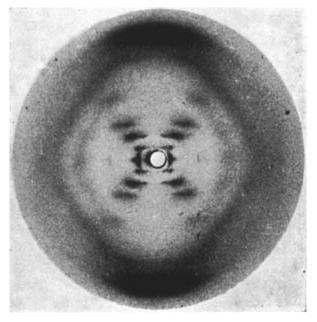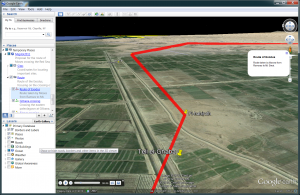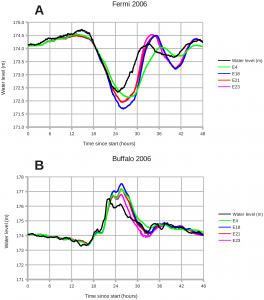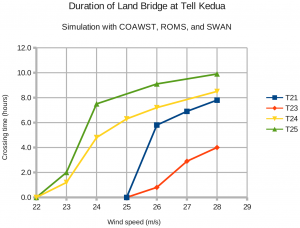The orphans were tied together for their safety. Their teacher had attached all the children with lengths of rope, tied securely around their waists, as the storm approached Galveston and the waters began to rise. And that is how the rescuers uncovered their lifeless bodies, by following the rope from one drowned child to another.
Erik Larson relates the tragedy of the Galveston orphans in his 2000 book Isaac’s Storm. A total of ~9,000 souls perished in that 1900 disaster. In 2005 a similar tragedy befell New Orleans, as Hurricane Katrina swept into the Louisiana delta and drove Lake Pontchartrain over the levees into downtown New Orleans. 1,833 people lost their lives, and at $108 billion Hurricane Katrina represented the largest monetary loss in U.S. history due to natural causes.
These human tragedies don’t have to be repeated.
I’m an ocean modeler at the National Center for Atmospheric Research (NCAR) in Boulder, Colorado. This is my personal blog at funmurphys.com with my own views. I use computer simulation to study hurricane-driven storm surge. I can send a Category 5 hurricane into New York, or Miami, or even Buffalo, New York. I can watch an advancing wall of water obliterate downtown Tokyo from the comfort of my office, all without anyone else getting wet. To do this, I construct a digital model of the coast and I blast it with 150-km/hr winds. A supercomputer calculates the hourly rise in sea level as the storm waters inundate populated areas. I can verify my calculations with past events, and evaluate the risk posed by future hurricanes.
Figure 11 of Drews C, Galarneau TJ Jr (2015) Directional Analysis of the Storm Surge from Hurricane Sandy 2012, with Applications to Charleston, New Orleans, and the Philippines. PLoS ONE 10(3): e0122113. doi: 10.1371/journal.pone.0122113
Grid cells in the ocean model are wet or dry. Grid cells containing water are colored blue for the sea; grid cells on land are colored green for vegetation. When the ocean rises and floods formerly dry cells (storm surge), I color them red. I use yellow when a normally wet cell becomes dry (wind setdown).
Just four colors: blue, green, red, and yellow. The ocean model runs and the grid cells change color. That’s all. It’s just a numerical model. But I also realize: People live in those grid cells. Every cell is home to businesswomen, teenagers, hourly laborers, little babies, and retired couples. The grids on my computer screen are filled with living, breathing, working, laughing people. Every grid cell matters. When I see a set of green cells along the coast turn red, I know the human cost. I have joined flood cleanup efforts and seen the destruction. I think about how to prevent the next disaster, how to warn these communities, and how to get them out of harm’s way.
If you live in a coastal area, you should know that supercomputers are even now running and calculating to protect your life and property. Researchers are developing coastal models to evaluate your risk and your evacuation plans. At NCAR, NOAA, and the National Hurricane Center, projects are underway to forecast hurricane-driven storm surge. Today you can view your city’s risk at http://www.nhc.noaa.gov/experimental/inundation/. Hopefully someday you will be able to click on a Google Earth plot of your own house and show the hourly surge forecast as the storm approaches.
Other hurricanes will surely come. Typhoons will pound the coasts of the Philippines, Taiwan, and Japan. We are determined that there will never be another Galveston 1900, that the human tragedy of New Orleans 2005 will never happen again. With accurate and timely forecasts, we are working to ensure that next time people won’t be in the way when the big waves come ashore.
Carl Drews, author of Between Migdol and the Sea: Crossing the Red Sea with Faith and Science.











